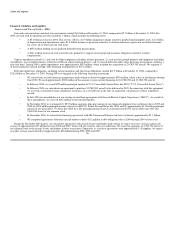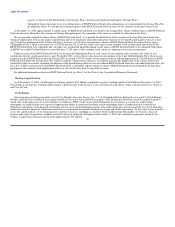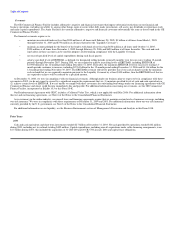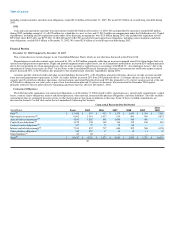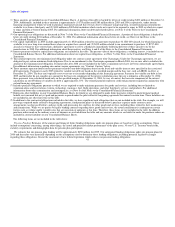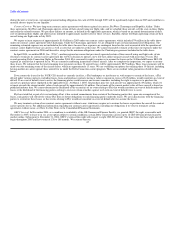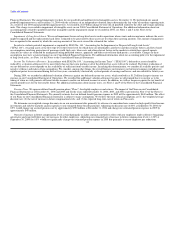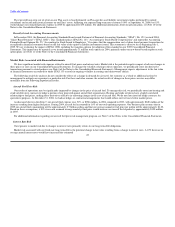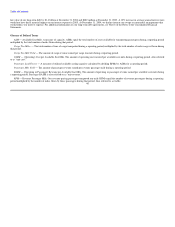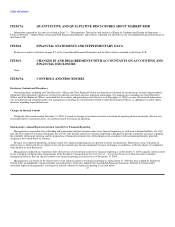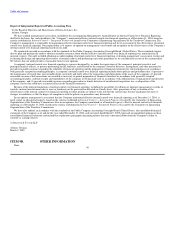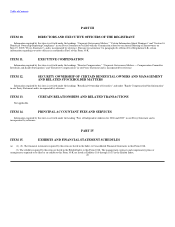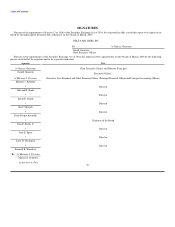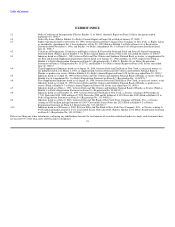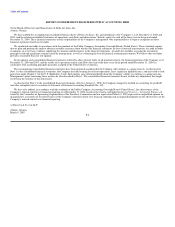Delta Airlines 2004 Annual Report Download - page 49
Download and view the complete annual report
Please find page 49 of the 2004 Delta Airlines annual report below. You can navigate through the pages in the report by either clicking on the pages listed below, or by using the keyword search tool below to find specific information within the annual report.
Table of Contents
The expected long-term rate of return on our Plan assets is based primarily on Plan-specific asset/liability investment studies performed by outside
consultants and recent and historical returns on our Plans' assets. Adjusting our expected long-term rate of return (9.00% at September 30, 2004) by 0.5%
would change our estimated pension expense in 2005 by approximately $35 million. For additional information about our pension plans, see Note 10 of the
Notes to the Consolidated Financial Statements.
Recently Issued Accounting Pronouncements
In December 2004, the Financial Accounting Standards Board issued Statement of Financial Accounting Standards ("SFAS") No. 123 (revised 2004),
"Share-Based Payment" ("SFAS 123R"). This standard replaces SFAS No. 123, "Accounting for Stock-Based Compensation" and supersedes Accounting
Principles Board Opinion No. 25, "Accounting for Stock Issued to Employees." It requires that the compensation cost of share-based payment transactions be
recognized in financial statements based on the fair value of the equity or liability instruments issued. This statement is effective for us beginning July 1,
2005. We are evaluating the impact of SFAS 123R, including the transition options for adoption of this standard on our 2005 Consolidated Financial
Statements. This impact may be material as we issued approximately 71 million stock options in 2004, primarily under our new broad-based employee stock
option plans (see Note 11 of the Notes to the Consolidated Financial Statements).
Market Risks Associated with Financial Instruments
We have significant market risk exposure related to aircraft fuel prices and interest rates. Market risk is the potential negative impact of adverse changes in
these prices or rates on our Consolidated Financial Statements. To manage the volatility relating to these exposures, we periodically enter into derivative
transactions pursuant to stated policies (see Note 4 of the Notes to the Consolidated Financial Statements). Management expects adjustments to the fair value
of financial instruments accounted for under SFAS 133 to result in ongoing volatility in earnings and shareowners' deficit.
The following sensitivity analyses do not consider the effects of a change in demand for air travel, the economy as a whole or additional actions by
management to mitigate our exposure to a particular risk. For these and other reasons, the actual results of changes in these prices or rates may differ
materially from the following hypothetical results.
Aircraft Fuel Price Risk
Our results of operations may be significantly impacted by changes in the price of aircraft fuel. To manage this risk, we periodically enter into heating and
crude oil derivative contracts to hedge a portion of our projected annual aircraft fuel requirements. Heating and crude oil prices have a highly correlated
relationship to fuel prices, making these derivatives effective in offsetting changes in the cost of aircraft fuel. We do not enter into fuel hedge contracts for
speculative purposes. At December 31, 2004, we had no hedges or contractual arrangements that would reduce our fuel costs below market prices.
As discussed above in this Item 7, our aircraft fuel expense rose 51%, or $986 million, in 2004 compared to 2003, with approximately $820 million of the
increase resulting from higher fuel prices. During 2004, aircraft fuel accounted for 16% of our total operating expenses. Our business plan assumes that in
2005 our aircraft fuel consumption will be approximately 2.7 billion gallons and that our average annual jet fuel price per gallon will be approximately $1.22.
Based on these assumptions, a 10% rise in our assumed average annual jet fuel price would increase our aircraft fuel expense by approximately $325 million
in 2005.
For additional information regarding our aircraft fuel price risk management program, see Note 3 of the Notes to the Consolidated Financial Statements.
Interest Rate Risk
Our exposure to market risk due to changes in interest rates primarily relates to our long-term debt obligations.
Market risk associated with our fixed-rate long-term debt is the potential change in fair value resulting from a change in interest rates. A 10% decrease in
average annual interest rates would have increased the estimated 45



